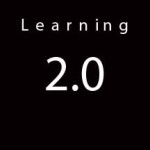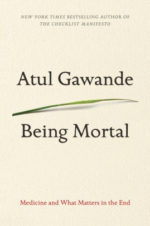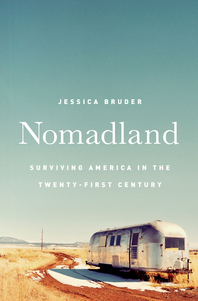Critiques of Learning 2.0 and Some Responses. Thanks To All
Posted on | March 2, 2012 | Comments Off on Critiques of Learning 2.0 and Some Responses. Thanks To All
I’ve received some response to the Politics of Learning 2.0, much of it helpfully critical. Here, in a nutshell, are some amendments that these critiques have spurred. Thanks to all for your thoughts. What follows are comments followed by my reactions.
I’m not sure Learning 2.0 is a good basis for all of education. Some teachers will have the initiative and smarts to pull it off, but is this replicable by all. Doubtful?
I made a serious error, I believe, in not explicating the software metaphor that lies behind the transition between Learning 1.0 and Learning 2.0. Smart software designers understand backward compatibility. Learning 2.0 builds on rather than replaces the previous version. Projects don’t replace direct instruction. Working across disciplines does not replace working in them. These are points that will be made in a revision of the report you read.
Building Learning 2.0 on the shoulders of Learning 1.0 supports direct instruction and also fosters the systematic development of projects, internships, sophisticated career/technical education, and other forms of combined head-and-hands learning builds capacity in the public education system. Building capacity is the central argument: California needs to switch its policies from the endless seesaw between more regulation and more deregulation in governance to systematically building capacity. One of the ways to do that is to build something like Learning 2.0.net: an information, teaching, and testing utility.
This is so old. You can even find old standards done in the earliest day of the outcome-based education movement.
I freely admit that there is “oldness” to some of the hands-on, participatory ideas. In one of my writing exercises leading up to the report you read, I reviewed the Douglas Thomas and John Seely Brown book The New Culture of Learning, which tries to capture the possibilities of the Internet age, alongside of John Dewey’s School and Society published in 1900. There are striking parallels, including “true believer” cultishness and an underestimation of the administrative cult of efficiency that would marginalize Dewey and his followers.
Still, dismissing the new because it resembles the old misses the point. Both Thomas/JSB and Dewey wrote in response to a change in society’s basic mode of work and production. Dewey saw the challenge of organizing learning in the industrial age. Thomas/JSB wrestle with the Internet. If education were a consumer market, or even a commercial one, the standard mechanisms of technology adoption, including the disruptive characteristics that Christensen, et al. write about, would sort this out. But public education, as we all know, is deeply institutional. Its politics have to do with brokering interest group behavior and legitimating certain activities while delegitimizing others. That’s what happened a century ago in Dewey’s time, and it’s what we have the opportunity to rethink now.
Students as workers: This views students simply as workers and not literate citizens.
There seems to be some confusion on this point. The student-as-worker phrase has to do with the inherent division of labor within schools, not the aim or schooling. In most of school reform, we treat students we try to get the adults to work differently or harder rather than recognize that what students do that counts. I am not suggesting The Lord of the Flies or Summerhill, only that at the policy and infrastructure level we recognize that regardless of what program of instruction one adopts, students have to do the work. Law and social norms can bring students to school; whether students use school as a place to learn is their decision. Always has been. Internet technology extends student agency about where and how they learn. My plea is simply to take advantage of this technology rather than treat it as distractive pop culture. The best way to take advantage of Internet technology is to place its educative potential in the hands of students directly.
What is lacking in this and always has been is solid liberal arts education where knowledge and subject matter competency means something.
You’ll get no argument from me that disciplinary knowledge is important. But the acquisition and storage model of learning is a disincentive for many if not most students. Consider writing. One learns to write by writing. Mechanics and grammar help make writing better, but learning them does not make one a writer. Most teachers of writing don’t understand the distinction. Most have produced little published work, nor have they assisted many students in becoming accomplished writers in any genre. It is only at the edges of the massive writing instruction enterprise that we find students engaged in the kinds of work that professional or scholarly writers undertake. Journalism classes, creative writing anthologies, and real research papers are celebrated more as exceptionalities than the way most students make their way through elementary and secondary schooling. So, if students end up using pop slang in texts or 147-character tweets, it’s because we have not provided a more attractive outlet for their developing talent.
Peer Production: The idea of thousands of people working on something for free will lead to high quality is questionable.
The argument for peer production is not a question of whether Wikipedia is the best encyclopedia, Moodle is the best classroom management system, or Linux is the best operating system. It’s a question of who controls the intellectual core of teaching and learning.
Public education exists in the old information economy, along with newspapers, television networks, and traditional universities. All these are extremely capital intensive and oligopolistic. The firms that profit from the old information economy in education have become both commercially acquisitive—in many cases replacing the curriculum development staffs of school districts and states—and highly protective of their interests through lobbying and copyright legislation.
If it chooses, public policy in California can establish, aid, and protect the new information economy built on networks of people rather than corporate vendors. The state can say to its 300,000 teachers that their grounded knowledge of what works, when, and how can be easily transmitted and used by others, that teaching no longer has to be an isolated occupation, and that collaboration can be rewarded rather than discouraged. Otherwise, technology will be used only to increasingly inspect teaching processes and to emphasize the industrial character of teaching work while decreasing its artistic and craft dimensions.
Building Capacity in California
A closing note on capacity building: I’ve watched educational policy being made for more than four decades. I’ve watched the institution descend from a celebrated civic virtue to untrusted object of derision. I’ve witnessed most of the new money being directed toward categorical programs for those not served well by the conventional system, rather than redesigning the system itself. I firmly believe that we cannot regulate ourselves to success and we cannot expect success to emerge from a deregulated market. We have to build capacity that makes public schools educational and political winners. That, I believe, is the big policy bet and the new California exceptionalism.
Learning 2.0.net is one of the relatively inexpensive ways that we can do so. Many options exist for building it. We have a lot of technology talent in this state to advise about how to put together an innovative public-private collaboration. We probably don’t need a “one best system” solution, but we do need to find a way forward with technology integration and its capacity to change learning and teaching.





